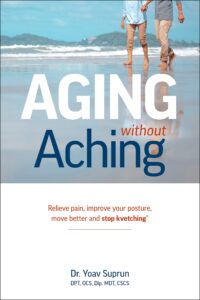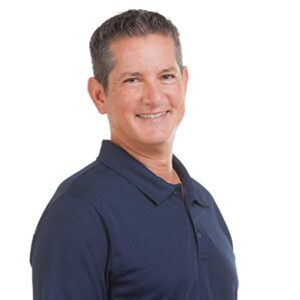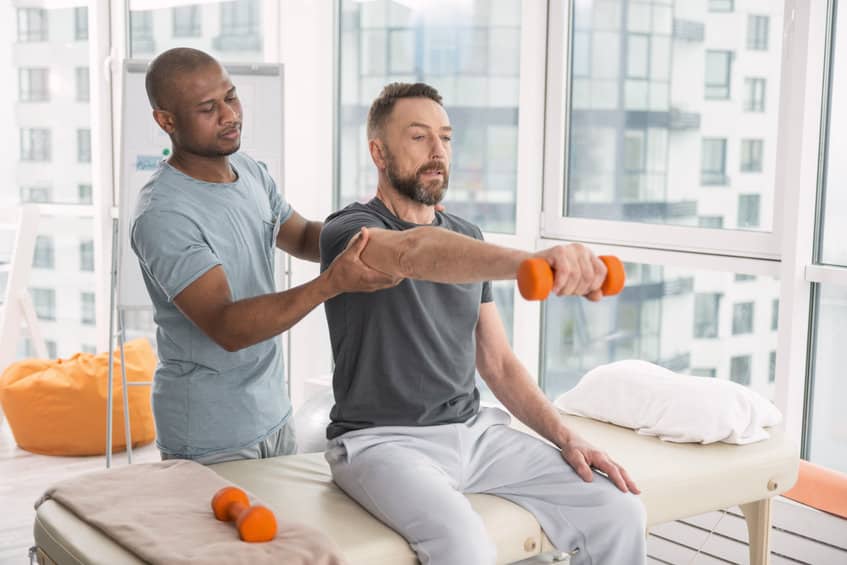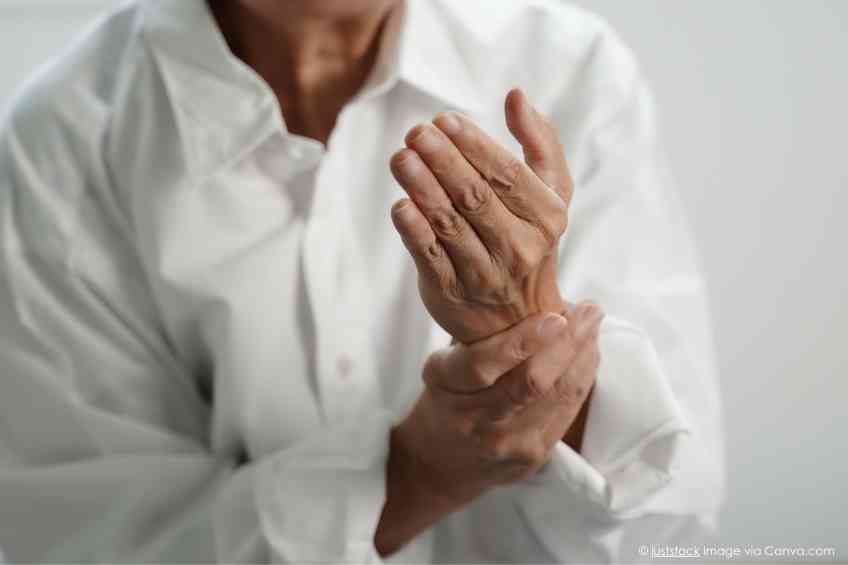Everyone can learn from their mistakes. Take Dr. Yoav Suprun. He started out as a personal trainer and did pretty well for himself, but he soon realized that he might not be doing his clients a whole lot of good. In fact, he quickly discovered that he might actually be generating more harm than help. This epiphany sent him on a new life trajectory. The author of Aging Without Aching recently spoke with WellWell about his personal dedication to The McKenize Method and Life discoveries he’s made, which include finding a pathway to aging gracefully and an understanding that some pain has a purpose.
How did you gravitate to this particular aspect of medicine or wellness?
I started as a personal trainer in 1995 in New York City and, unfortunately, it didn’t take long before I injured a bunch of clients cross-training them. Some of them had back pain, sciatica, neck pain and stiffness and I always stretched them. That’s what trainers do.
After injuring enough people, I applied for the doctorate program at NYU, paid a lot of money, did a three-year program and then went to work for one of my professors who introduced me to the McKenzie Method. Robin McKenzie was a brilliant clinician. He’s one of the giants in the world of physical therapy and I started studying his method and fixed my own neck pain in one weekend that I had for 8 months without anyone touching it. That’s when I saw the light and I said, “Okay, I have to study this method and I have to teach it.”
And how about your book? What inspired you to write it? 
Aging Without Aching is a synopsis of my history as a crappy personal trainer. Did my best and did very well, but I didn’t realize that sometimes I wasn’t addressing the root cause of the problem. That’s when I decided to become a physical therapist, then a Doctor of Physical Therapy and also a faculty member of the McKenzie Institute USA. I share prevention strategies and simple ways for readers to implement techniques that will allow them to age more gracefully with an elegant posture and with minimal mechanical aches and pains.
Is the McKenzie Method similar to the Feldenkrais Method, therapeutic yoga or things alike? Is it a totally unique approach?
It is a unique approach that allows the patient to adjust their own body. Feldenkrais is more of awareness through movement. McKenzie practitioners assess and educate the patient and give them prevention strategies. We give them specific exercises to resolve their pain as well as prevention strategies, so it doesn’t recur. I’ll give you an example. I had left-sided neck pain. The only movement I needed to do was to bring my left ear to my left shoulder and I always stretched to the right. When there’s pain on the left upper trapezius or in the left shoulder blade, most people stretch towards the right side of the body. My answer was actually to move into the pain. I’ll give you another example of moving into the pain. You get out of your car, you watched Netflix for 2 hours, you get up from your sofa and your back is very stiff. Most people will stretch forward and bring their hands to the toes. go into a child’s pose in yoga or hug their knees to their chest. That’s what I used to recommend for people when they have back pain. But instead, you need to extend your spine and not flex your spine. Extension of the spine can be done with your hands in the lower back, can be done against a counter, it can be done in the cobra pose position in yoga where you lie on the stomach and press your upper body up. All people experience pain and they think they’re hurting themselves. And that’s a very important component of the McKenzie Method. We educate patients on what good pain is, what necessary pain is and how to interpret pain. Hurt does not mean harm. If you have sciatica and you’re driving for two or three hours in the car, your leg may be raging in pain. As you start to get out of the car, your leg starts to feel better but now you’re developing back pain. That’s a very, very good phenomena called centralization. The patient moves in a specific direction that will centralize their pain and eventually abolish it.
Short of disease, is it inevitable that people are going to face more back and body pain as they age?
No. If a person addresses their body as part of an integrative approach, which means they first learn what they are, what they’re allergic to and what kind of foods are causing the inflammation, then no, pain isn’t inevitable. I address the mechanical component but avoiding inflammation through appropriate nutrition is critical. Then if they do the right steps and continue moving and balance the motions around the joints, pain can be avoided. But if you reach 70 or 80 and you haven’t maintained the full available range of motion of your joints, your knees will hurt. Ultimately, there is a very large opportunity to educate the public as to what can be done so you can get to your later years without aches and pains. Now, aches and pains can come in your twenties, thirties and forties as well. You can work out, you can have a bed that’s too soft and you’ll wake up every morning with aches and pains, but getting older doesn’t necessarily equate to having more pain.
Is it a matter of doing the right things or not doing the wrong things?
Definitely a combination and, you know, it boils down to the simple activities of daily living. For example, no one, I repeat no one, should look down at their phone. The phone should be held in a certain way that keeps the head and the ears over the shoulders, not in front of the shoulders. The same goes for how you watch television in bed, how you’re sitting in your car or how you’re using your computer. Those mechanical rules will help a person in their thirties and a person in their nineties avoid pain. There are certain things we do that we need to stop and move in often movements in opposite directions will keep pain at bay.
I want to go back to something you said earlier. Pain does not mean harm. Can you explain that a little bit more?
I’ll go back to the example of centralization. If you have leg pain that is starting from a pinched nerve in your back, you may be walking down the street and limping, your leg hurts and you decide to do something about it. You put your hands on your lower back and you start bending backward, what’s called extension. You do 20-30 repetitions and as you’re doing it, your leg pain subsides but now your back pain increases. The pain leaves the leg and becomes more central, which is good. Hurt doesn’t mean harm. By virtue of you centralizing your pain, the pain is moved to a more central location. And centralization of pain that occurs when a person exercises is a very good thing. So, people say to me, “Okay, so I abolished my sciatica, now I have back pain. What do I do for my back pain?” You continue to do more repetitions of what you just did to centralize your sciatica pain into your back. By doing that the pain will subside. That’s an important phenomenon that people don’t understand. When they get back pain, what do they tend to do? They step in the shower and have the hot water hit their back, right? They bend forward, they have knees to chest and then your sciatica will turn on again. Often, you will only feel good during those stretches. However, they won’t fix the problem.
Can you explain why centralization of pain is beneficial? Why is it essential?
Readers should Google centralization. It’s heavily documented by research. The reticle model behind it is that there’s less nerve compression. For you to use your legs, for example, the nerve in your lower back has to send a powered sensation to the leg. If that nerve gets compressed, your leg will hurt. The more you squeeze the nerve, the further down the leg you will feel the pain. Think of a water hose. The more I put my foot on the hose, the angrier you’re going to get with me because you can’t release water at the end of the hose. The more I release the pressure of the hose, the more the flow will become normal. As far as neurological pain, centralization occurs when the spine is moving in the right direction. That is what’s called a directional preference. When we do a McKenzie assessment, we’re searching for these directional preferences. It is essential when I’m treating patients to find the direction that reduces or abolishes or centralizes. This could be their leg pain in the case of sciatica or arm pain or shoulder blade pain. It could even be numbness and tingling and pain in your hand in the case of cervical radiculopathy or cervical problems.
It seems you’re in the camp of medical professionals who want to use these approaches to treat pain before surgery, injections or even heavy use of pain killers. Are more professionals moving this way?
It depends. There is a shift. I think the shift is occurring now among the public. The public is more educated, the public can see their friends having spine surgery and not getting better or requiring another surgery. You know, obviously, in some cases, it’s absolutely required and it’s a great thing. But then some patients have their hips or knees replaced because someone told them, “You’re bone on bone, you’re 70, you’re fat, you have no meniscus left.” They do this and they still have knee pain and come to my office and say, “Dr. Yoav, this is not my knee, this is a titanium, brand new, manufactured knee. How come my knee hurts?” Guess what? The pain generator is their spine. You know 71 percent of hip pain is from a spinal source. And 46 percent of shoulder pain is all cervical sourced. Neck, also from the spine. That’s where the shift is. The orthopedic world is now starting to see that people are becoming more educated and that’s what my job is, to educate the public. Your readers must know that you should never replace your hip until someone examines your spine because the spine can cause you to feel pain in a very distant, geographical location.
How do patients take this approach with their doctor if that physician isn’t familiar with the McKenize Method? How do they go about making sure their pain isn’t a spinal issue if they don’t have easy access to people such as yourself?
They can go to the McKenzie Institute USA, put in their zip code and within 25, maximum 50 miles, there’s going to be a practitioner near them.
 About Dr. Yoav Suprun
About Dr. Yoav Suprun
Dr. Yoav Suprun, DPT, OCS, Dip. MDT, CSCS, started his professional career as a personal trainer before earning his clinical doctorate in physical therapy from New York University. He continued his post-graduate education and received his diploma in Mechanical Diagnosis and Therapy (MDT) soon afterward. The owner of South Beach Spine, a concierge physical therapy practice in Miami Beach, he is also a faculty member with the McKenzie Institute USA.
Learn More at Sobespine.
Aging Without Aching can be purchased at Amazon.












